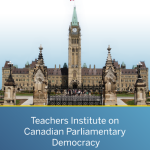
By John Myers
It’s a new year, and in many cases the end of one semester and the beginning of another. This is a good time to reflect on what went well, what could be better and how to improve. If incorporating more recognition of our diversity in course content* is your goal, parts one and two in this series offer choices based on clear criteria and online examples to make simple but powerful changes, while recognizing the challenges in any curriculum change. For example, our “household curriculum” has its challenges when it comes to waste management when we try to incorporate some of the many languages spoken and written in the greater Toronto area (https://www.cbc.ca/news/canada/toronto/lost-in-translation-2020-waste-management-calendar-1.5400004). News media all too often presents stories related to diversity dealing with challenges, though you can also find media stories of accomplishments. The latter is often underreported.
We continue our resource quest with examples of online, free, and bilingual work that you can “plug and play” to some extent. All of these are familiar to you and you may have used some of them. These are at a more complex level of implementation thought their surface familiarity may already provide you with a foundation of understanding that will help you and your students.
Historica https://www.historicacanada.ca/ is a portal for you to look for all sorts of classrooms opportunities through useful contents, lessons and units, “Heritage Minutes” that can spur inquiry and visits from people who have gone through the process of immigrating to Canada. Passages to Canada, one path from Historica offers a portal to resources and ideas to support curriculum changes in all CWS and SS&Hs courses grades 7-12.
GUMICH- If you are to deepen student inquiry in history using primary resources while tackling interesting topics that promote understanding of Canada’s diverse past you can choose among the works in https://canadianmysteries.ca/en/index.php. This resource brings us to a unit level so we move beyond simple plug and play lessons or parts of lessons. In addition to more than a dozen “mysteries”, other features in the website can spur meaningful classroom discussions. This is a rich resource!
One collaborator to the GUMICH projects and rich in its own right is the Critical Thinking Consortium (www.tc2). With some exceptions, successful use of the resources requires a level of understanding of the critical thinking model they initially developed 25 years ago. Also with some exceptions access to the work requires a paid individual or school district level membership. But one of these exceptions provides a rich exploration of issues around reconciliation. What Can I Contribute to Meaningful Reconciliation is a free download from https://tc2.ca/en/reconciliation. This collaboration between a school district in Ontario and several indigenous groups offers a detailed exploration of issues using some powerful questions.
A complementary direction towards diversity with a proven track record based on 40 years of work, beginning with Holocaust studies in the United States is offered by Facing History and Ourselves https://www.facinghistory.org/about-us/offices/canada. Like TC2, the Facing History network offers support from colleagues as well as resources. People make choices and choices shape history. This way of looking at history is real; therefore, meaningful and memorable.
How Do I Choose a Path to Pursue?
This series to date has suggested a sequence of implementing these resources beginning with plug and play small additions such as primary source documents or cartoons (Charles Hou) then to lesson and unit sizes (Doing the Right Thing from the Canadian Race Relations Foundation and Voices into Action) then to incorporate a pedagogical framework for more complex units as the resources in this article outline.
The work of James Banks offers another way to revise curriculum to incorporate multicultural perspectives. Here is one version of his progression of implementation approaches to inclusion (https://www.oise.utoronto.ca/edactivism/Activist_Planning_Tools/Model_for_Inclusive_Curriculum.html)
| Contributions Adding diverse hero/ines to the curriculum, selected using criteria similar to those used to select mainstream hero/ines for the curriculum. |
| Additive Adding a variety of content, concepts, themes, and perspectives to the curriculum without changing its basic structure. |
| Transformation Changing the actual structure of the curriculum to help students to view concepts, issues, events, and themes from the perspectives of diverse groups. |
| Social Action Allowing students to make decisions on important social issues and take actions to help solve them. |
As you use the resources featured in this series you can also link them to Banks’ taxonomy of inclusion. Banks’ stages can be mixed and matched to your work as you respond to questions such as the following:
– Hoe do I integrate new content into my curriculum that includes examples from other cultures such as those represented in my school or in broader Canadian society to illustrate disciplinary concepts and modes of thinking?
– How do I efforts to integrate demonstrate that such content is valued?
While first steps at integration may stress contributions and additions the vision is to go beyond to promote societal change.
Part Four
In the next article I will combine pedagogy and integration by returning somewhat to “plug and play” with a set of resources that are new to most of us teaching in Ontario. This combination you can replicate in many ways.
Stay tuned.
End Note
* Similar work in diversifying curricula through a more specific gendered-lens can also be found in OHASSTA circles such as work by OISE’s Rose Fine Meyer.


